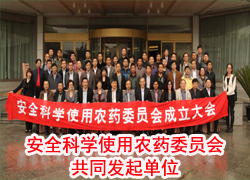
Global crop protection market down 9% in 2015
責(zé)任編輯:本站編輯 來源:Agrow 日期:2016-01-19
Global crop protection sales fell by 8.5% to $51,835 million at the distributor level in 2015, according to preliminary figures from Agrow parent company Informa’s seeds & agrochemical consultancy, Phillips McDougall. Key factors included a strengthened US dollar, lower prices of agricultural commodities, high inventory levels at the distributor level in many countries, weakening glyphosate herbicide prices and variable weather patterns, including a weak monsoon, as a result of the ongoing El Niño phenomenon. When currency and inflationary effects are removed, crop protection real growth dipped by just 0.3%. In constant dollar terms, sales were down by 0.8%.
Sales of all pesticides, including non-crop products, fell by 8% to $58,181 million. Non-crop business was 3.2% down in nominal terms at $6,346 million.
Crop protection sales in almost all regions declined, with the deepest falls occurring in Europe and Latin America. However, the latter saw growth in inflation-adjusted national currency terms.
Despite a fall of over 10% in crop protection sales, Latin America remained the major market with sales of $14,490 million. The 2014/15 season was charactered by a further shift from maize to soybean planting. Weather conditions turned very dry in 2015, although El Niño rains delayed 2015/16 planting in Argentina and Brazil. Both countries suffered from economic pressures and the high cost of borrowing, while distributor inventory was also an issue in Brazil.
The steepest decline came in Europe, with sales down by almost 16% to $11,694 million. The market generally benefited from a mild winter and an early spring. Trading conditions in Ukraine improved, however economic weakness affected the Russian market.
The NAFTA regions market experienced a 4.4% fall in sales to $9,378 million. The US market was again affected by a delayed start to the spring, although not as late as in 2014, impacting the pre-emergence herbicide market. Canada suffered from high crop stocks and low prices as well as a cool dry summer. Mexico benefited from better rainfall than in 2014.
Sales in Asia dipped by 3.7% to $14,100 million. Sales in many country markets were generally positive in national currency terms. Another weak monsoon held up growth, while weather conditions in parts of Australia improved. Rice prices generally improved as de-stocking by Thailand appears to be complete. Nevertheless, market recovery did not meet expectations due to adverse weather.
Sales in the rest of the world inched 0.2% higher in nominal terms to $2,173 million.
Crop protection sales by region ($ million)
|
Region |
2014 |
% change |
2015 |
|
Latin America |
16,147 |
-10.3 |
14,490 |
|
Asia |
14,644 |
-3.7 |
14,100 |
|
Europe |
13,885 |
-15.8 |
11,694 |
|
NAFTA |
9,810 |
-4.4 |
9,378 |
|
Rest of the world |
2,169 |
+0.2 |
2,173 |
|
Total |
56,665 |
-8.5 |
51,835 |
Source: Phillips McDougall.
The global planted areas of wheat and soybeans rose, although all other major crops experienced a decline. Maize and rice plantings marginally declined, while the cotton, oilseed rape and sunflower areas suffered greater falls. Phillips McDougall notes a further increase in the adoption of stacked trait varieties.
Global crop areas 2015
|
Crop |
Area (million ha) |
% change vs 2014 |
|
Wheat |
224.8 |
+1.1 |
|
Maize |
177.5 |
-0.6 |
|
Rice |
159.2 |
-0.5 |
|
Soybeans |
121.0 |
+2.4 |
|
Oilseed rape |
34.6 |
-3.4 |
|
Cotton |
31.1 |
-8.1 |
|
Sunflowers |
22.9 |
-1.1 |
Source: Phillips McDougall.
Outlook
There is some optimism for a more positive market environment in 2016, according to Phillips McDougall. The consultancy foresees improved wheat, maize and rice prices next year, citing a lack of improved production levels and reduced inventories. All the major wheat production areas suffered, with the Argentine harvest impacted by flooding, a dry and cool summer affecting Canada and northern Europe, while parts of Australia remained dry. Similarly, maize production was hit by a dry end to 2014/15 in Brazil, while wet weather reduced the potential of the US crop and European output was affected by a dry summer. The poor 2015 monsoon season has held back rice production, such that stocks are at a five-year low.
Early indications point to a further shift towards soybeans from maize in Latin America in 2016, although increased maize areas may be anticipated in Brazil’s second (safrinha) season. It cites restrictions on soybean cultivation in some regions in a move to limit Asian soybean rust (Phakopsora pachyrhizi) pressure.
However, some of the problems encountered in 2015 may persist into 2016, including high distributor inventory levels and poor weather conditions.(source: Agrow)
中國農(nóng)藥工業(yè)網(wǎng) 版權(quán)所有
地址:北京市朝陽區(qū)農(nóng)展館南里通廣大廈7層
電話:010-84885233 京公網(wǎng)安備11010502025163










